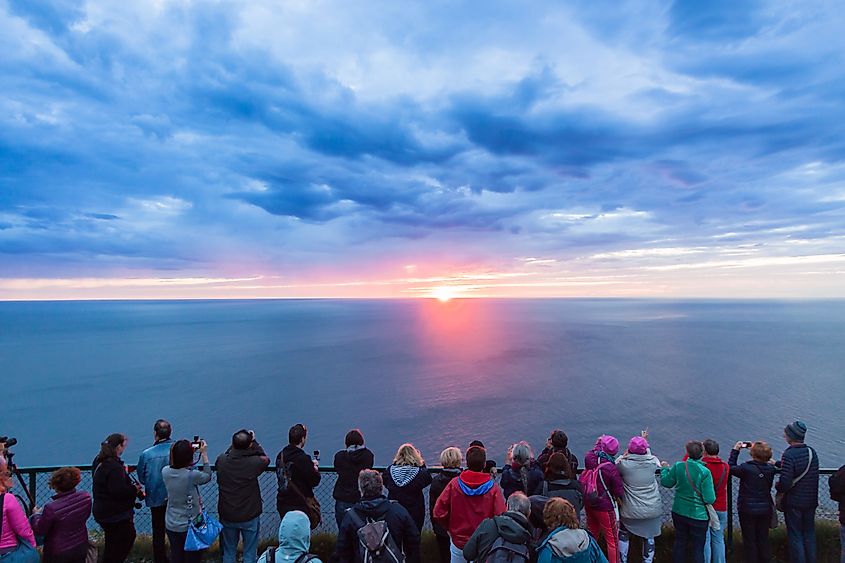
What Are Polar Nights And Midnight Sun?
Polar nights and the midnight sun are opposing natural phenomena that occur in the polar regions. During polar nights, places near the poles experience extended nights for 24 hours or more while midnight sun refers to sun shining even at midnight. The latter happens when daylight hours are extended to 24 hours or more.
What Are Polar Nights?

A polar night is a term given for a day in which the sun never rises, giving the impression of night. Specifically, the sun does not rise above the horizon for 24 hours, resulting in a full day of darkness or twilight. Due to the Earth's axis, which is tilted roughly 24 degrees, this phenomenon only occurs above the Arctic Circle or below the Antarctic Circle when these regions are blocked from receiving the usual amounts of sunlight.
The sun must stay 18 degrees below the horizon line to achieve total darkness or complete nighttime as opposed to a twilight experience, which can occur when the sun is not visible but is close enough to the horizon to shed some light. The latter condition is similar to when the sun is setting, except that the sun is on the horizon for a prolonged period.
What Are Polar Days Or Midnight Sun

A Polar Day, also known as the Midnight Sun, is the opposite of a Polar Night. While a Polar Night is when the sun does not rise above the horizon, a Polar Day occurs when the sun does not set or sink below the horizon for 24 hours or more. This creates the appearance of daylight, even during the PM hours. A polar sun happens when a region (i.e., the area above the Arctic Circle or below the Antarctic circle) is tilted towards the sun and receives prolonged sunlight.
When Do Polar Nights And Days Occur?

Polar nights/midnight sun occur in the two hemispheres at different seasons of the year. The December solstice, which officially kicks off the winter season and occurs on December 21 or 22, marks a time of shorter days for those in the Northern Hemisphere. It means polar night above the Arctic Circle at the North Pole. Alternatively, days are at their longest point in the Southern Hemisphere, and those below the Antarctic Circle will be experiencing Midnight Sun. The Summer solstice occurs on June 21 or 22. It has the opposite effect, whereby the Southern hemisphere experiences shortened days, the South Pole has polar nights, and the Northern hemisphere experiences longer days with places experiencing the midnight sun.
Because they occur based on both the tilt of the Earth and the proximity to the north or south poles, Polar Nights and Polar Days last for different lengths of time depending on your location. In the North, the length of a polar night increases the closer you get to the North Pole, while the same happens below the Antarctic Circle as you travel further south towards the south pole. At the poles, Polar Nights occur for six months, followed directly by six months of Midnight Sun. Each degree change in latitude (north or south) changes the length of a Polar Night or Day by roughly 144 hours or six days.
Do Polar Nights Impact Humans?

Living in an area that experiences Polar Nights can be taxing on humans. Because polar nights mean no sunlight, humans in these regions do not receive any sunlight for extended periods, which can directly affect serotonin and mood. Humans who live in these regions experience a much higher risk of depression due to prolonged darkness. It is possible to combat this by maintaining serotonin and endorphin levels in other ways - such as through exercise or artificially through vitamin supplements or sun lamps.
So, while polar nights and the midnight sun are impressive phenomena of nature, they can also have detrimental effects on those exposed to them for longer durations by disrupting sleep patterns, moods, or routine. Yet, humans continue to inhabit such areas, exhibiting the highly resilient nature of our species.











